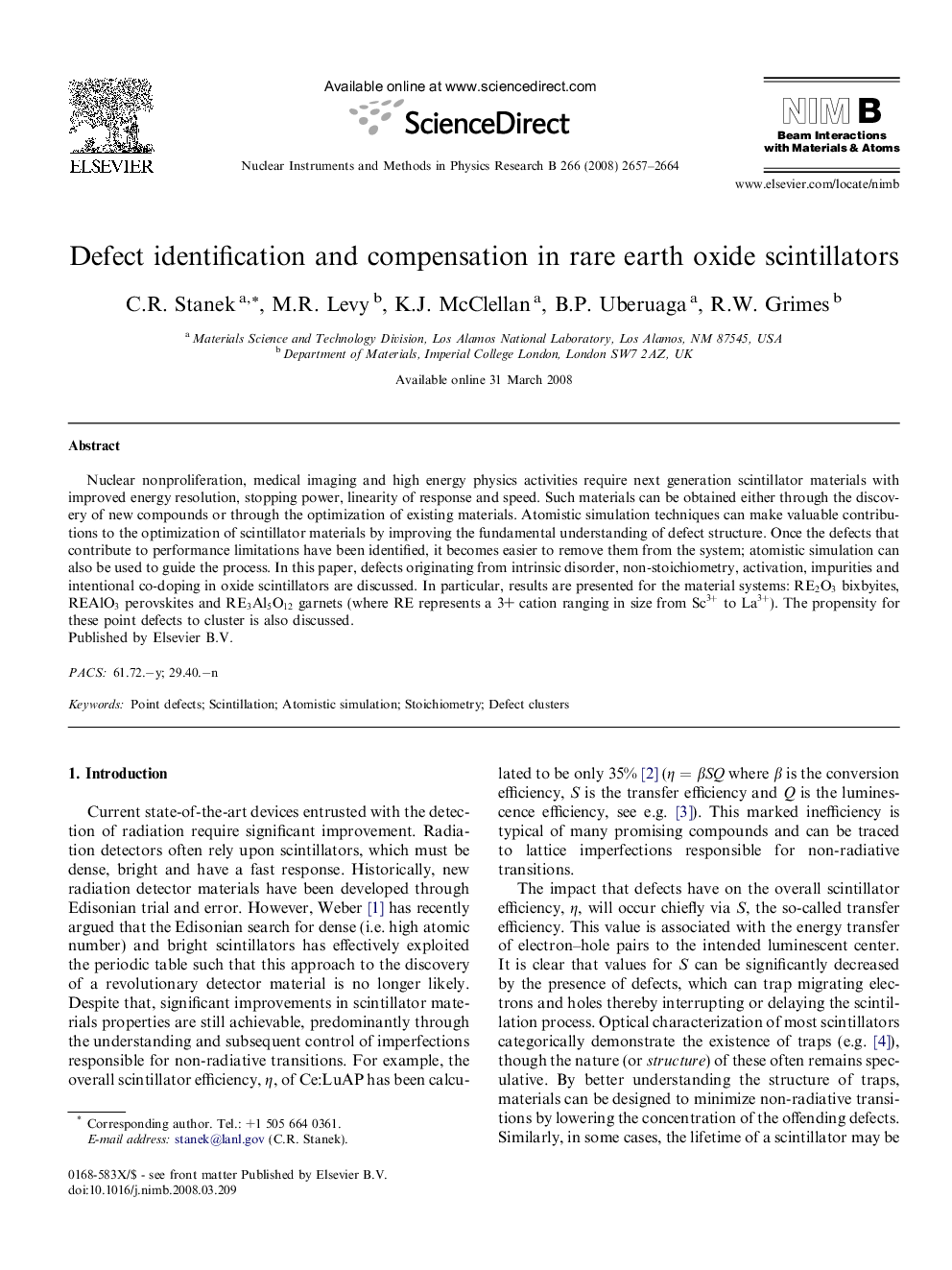| Article ID | Journal | Published Year | Pages | File Type |
|---|---|---|---|---|
| 1685988 | Nuclear Instruments and Methods in Physics Research Section B: Beam Interactions with Materials and Atoms | 2008 | 8 Pages |
Nuclear nonproliferation, medical imaging and high energy physics activities require next generation scintillator materials with improved energy resolution, stopping power, linearity of response and speed. Such materials can be obtained either through the discovery of new compounds or through the optimization of existing materials. Atomistic simulation techniques can make valuable contributions to the optimization of scintillator materials by improving the fundamental understanding of defect structure. Once the defects that contribute to performance limitations have been identified, it becomes easier to remove them from the system; atomistic simulation can also be used to guide the process. In this paper, defects originating from intrinsic disorder, non-stoichiometry, activation, impurities and intentional co-doping in oxide scintillators are discussed. In particular, results are presented for the material systems: RE2O3RE2O3 bixbyites, REAlO3REAlO3 perovskites and RE3Al5O12RE3Al5O12 garnets (where RE represents a 3+ cation ranging in size from Sc3+Sc3+ to La3+La3+). The propensity for these point defects to cluster is also discussed.
